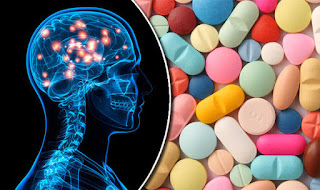World Pharmacology 2019
Drug overdose:
A drug overdose is the ingestion or application of a drug or other substance in quantities much greater than are recommended. Typically it is used for cases when a risk to health will potentially result. An overdose may result in a toxic state or death.
The word
"overdose" implies that there is a common safe dosage and usage for
the drug; therefore, the term is commonly only applied to drugs, not poisons,
even though some poisons are harmless at a low enough dosage. Drug overdose is
caused to commit suicide, the result of intentional or unintentional misuse of
medication. Intentional misuse leading to overdose can include using prescribed
or unprescribed drugs in excessive quantities in an attempt to produce
euphoria. Usage of
illicit drugs of unexpected purity, in large quantities, or after a period of
drug abstinence can also induce overdose. Cocaine users who inject
intravenously can easily overdose accidentally, as the margin between a
pleasurable drug sensation and an overdose is small. Unintentional misuse can
include errors in dosage caused by failure to read or understand product
labels. Accidental overdoses may also be the result of over-prescription,
failure to recognize a drug's active ingredient, or unwitting ingestion by children.
A common unintentional overdose in young children involves multi-vitamins
containing iron.
Signs and Symptoms:
Signs and
symptoms of an overdose vary depending on the drug or exposure to toxins. The
symptoms can often be divided into differing toxidromes. This can help one
determine what class of drug or toxin is causing the difficulties.
Symptoms of
opioid overdoses include slow breathing, heart rate and pulse. Opioid overdoses
can also cause pinpoint pupils, and blue lips and nails due to low levels of
oxygen in the blood. A person experiencing an opioid overdose might also have
muscle spasms, seizures and decreased consciousness. A person experiencing an
opiate overdose usually will not wake up even if their name is called or if
they are shaken vigorously.
Causes:
Using drugs
at an early age can cause changes in the developing brain and increase the
likelihood of progressing to drug addiction. Taking a highly addictive drug.
Some drugs, such as stimulants, cocaine or opioid painkillers, may result in
faster development of addiction than other drugs.
Drugs that
are psychoactive, such as cannabis, alcohol, ecstasy and heroin, have the ability
to affect your mood. They can arouse certain emotions or dampen down others.
This may be why you use them. The changes in your mood or behavior
********************************************************
To know more about recent researches from our eminent speakers, & exhibitions kindly join with us at World Pharmacology Congress 2019 | Dubai | December 09-10

















